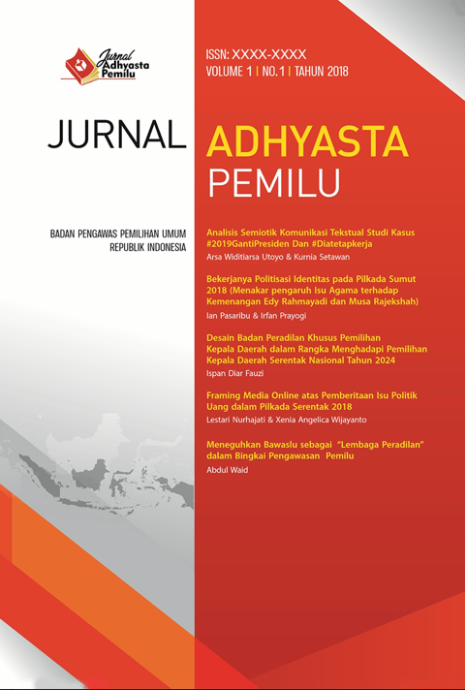Analisis Semiotik Komunikasi Tekstual Studi Kasus #2019GantiPresiden dan #DiaTetapKerja
DOI:
https://doi.org/10.55108/jap.v1i1.1Kata Kunci:
semiotics, elections, politics, text, messagesAbstrak
Text semiotics is a branch of semiotics, which specifically examines texts in various forms and levels. Text analysis is a branch of text semiotics, which specifically examines the text as a ‘product of language use’ in the form of a collection or combination of signs. Text is defined as messages — both using verbal and visual signs; and more specifically, it is written messages, namely language products in written form. Signs are part of social life. Through social conventions, it has social meaning and value. According to Saussure, ‘sign’ is an inseparable unity of two fields, namely the signifier to explain ‘form’ or ‘expression’; and the signified field, to explain ‘concept’ or ‘meaning’. Meanwhile, Charles Sander Peirce classified the sign types into three types, namely indexes, icons, and symbols. Index is a sign where the signifier relationship and signified in it are causal, such as the relationship between smoke and fire; the icon is a sign where the relationship between the marker and the marker is similar; and the symbol is a sign that the marker and marker relationship are arbitrary or conventional. Text analysis operates at two levels: First, the analysis of individual signs, such as the type of sign, mechanism or sign structure, and the meaning of the sign individually. Second, the analysis of signs as a group or combination, which is a collection of signs that form what is called ‘text’. Text analysis, according to Roland Barthes, will produce denotative meaning, namely the meaning of an explicit sign, and connotative meaning, namely the meaning of an implicit second tier. The conclusion is that there are differences in ideology, writing of the thesis as a political medium so as to create myths to influence and build public awareness.
Unduhan
Unduhan
Diterbitkan
Cara Mengutip
Terbitan
Bagian
Lisensi
Hak Cipta (c) 2021 Kurnia Setawan, Arsa Widitiarsa Utoyo

Artikel ini berlisensi Creative Commons Attribution 4.0 International License.



